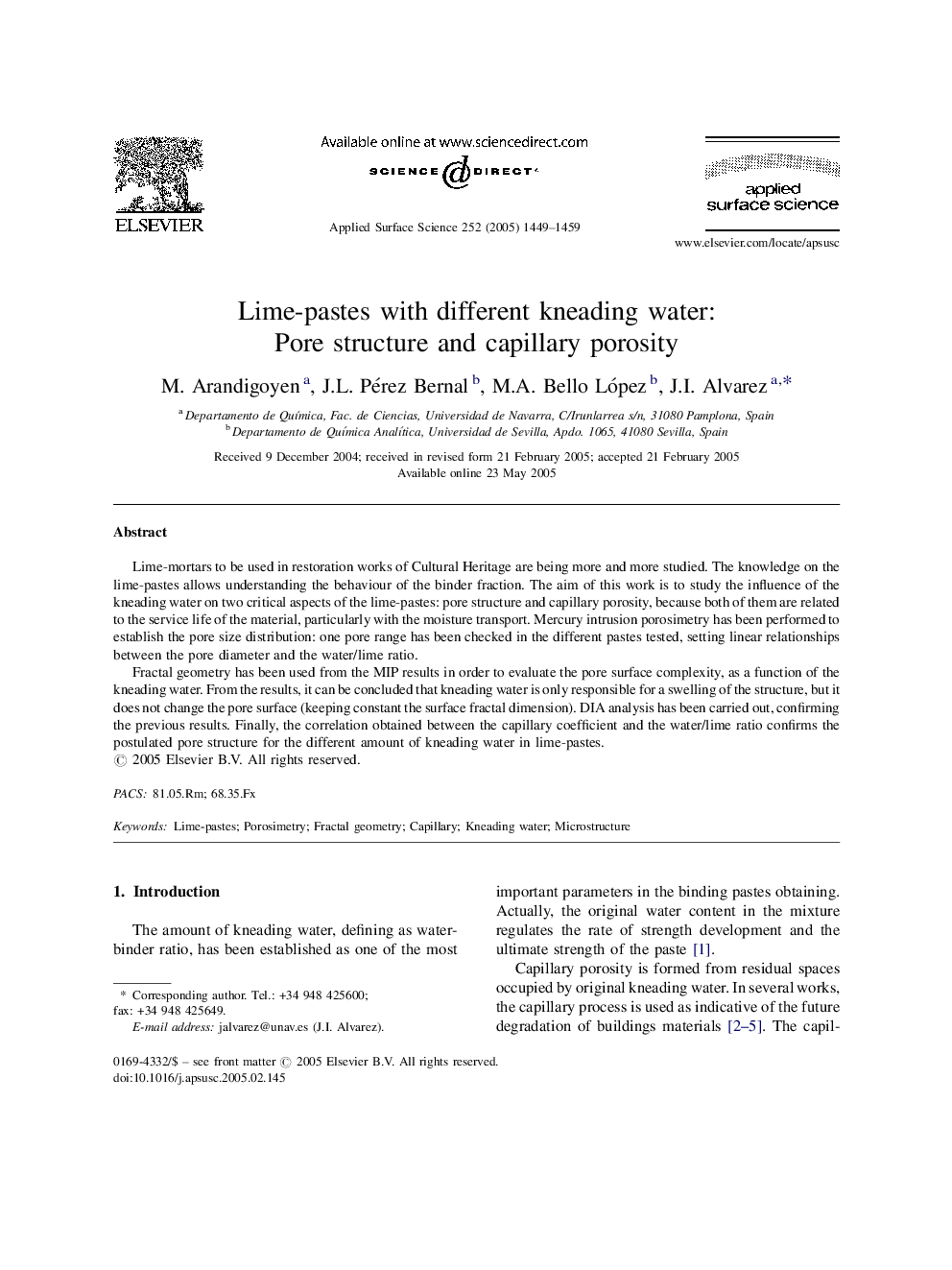| Article ID | Journal | Published Year | Pages | File Type |
|---|---|---|---|---|
| 5370490 | Applied Surface Science | 2005 | 11 Pages |
Lime-mortars to be used in restoration works of Cultural Heritage are being more and more studied. The knowledge on the lime-pastes allows understanding the behaviour of the binder fraction. The aim of this work is to study the influence of the kneading water on two critical aspects of the lime-pastes: pore structure and capillary porosity, because both of them are related to the service life of the material, particularly with the moisture transport. Mercury intrusion porosimetry has been performed to establish the pore size distribution: one pore range has been checked in the different pastes tested, setting linear relationships between the pore diameter and the water/lime ratio.Fractal geometry has been used from the MIP results in order to evaluate the pore surface complexity, as a function of the kneading water. From the results, it can be concluded that kneading water is only responsible for a swelling of the structure, but it does not change the pore surface (keeping constant the surface fractal dimension). DIA analysis has been carried out, confirming the previous results. Finally, the correlation obtained between the capillary coefficient and the water/lime ratio confirms the postulated pore structure for the different amount of kneading water in lime-pastes.
